A New Perspective and Enlightenment at the Third Annual Umami Lecture in New York
April 2015
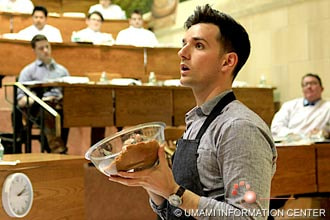
Japanese cuisine, which heavily relays on the pure umami soup stock dashi, has been gaining more and more popularity. And along the fame of the Japanese cuisine, umami (pleasant savory taste), the fifth basic taste after sweet, sour, salty and bitter, has also been attaining recognition. However, not many food professionals have had the opportunity to learn exactly what "umami" is. To bridge the gap, the Umami Information Center, an international non-profit organization dedicated to the teaching of umami, organized the Annual Umami Lecture at the Culinary Institute of America (NY). In mid - March, its third installment took place.
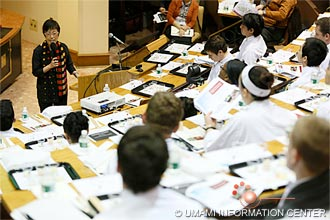
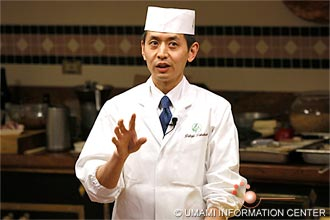
The director of the Center, Dr. Kumiko Ninomiya, opened the lecture explaining how amino acids widely present in foods taste sweet, bitter or umami. She made the point that umami is present not only in traditional Japanese ingredients but also in other foods such as onion, asparagus, mushroom, broccoli and cheese, which are common in the Western cuisine. Scientifically, umami is the taste of glutamate, the most abundant amino acid in nature; when inosinate and guanylate that are primarily found in meat, fish, and dried mushrooms accompany glutamate, umami is strongly enhanced and their combination makes food taste deeper and well balanced. "It could be beneficial for your health too, "she stated, "Because it could replace salt."
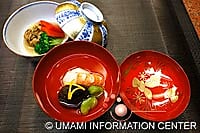
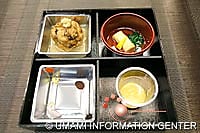
Chef Takuji Takahashi from the long-established Japanese restaurant in Kyoto "Kinobu" is eager to educate about the essential difference between Japanese and Western cuisine. He explained in his lecture that the subtle taste of the Japanese soup stock dashi corresponds to a pure extraction of umami components glutamate and inosinate. This umami in dashi brings out the natural flavors of foods; whereas the more dominant taste of the chicken soup stock is the result of a complex amino acid mixture with the aroma of chicken, although delicious, fuses into foods masking their original flavors. In collaboration with the also Kyoto Chef Soichiro Hidari from "Tatsumiya," chef Takahashi let students experience these contrasts by tasting turnip that had been prepared in either bouillon or dashi.
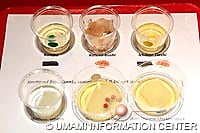
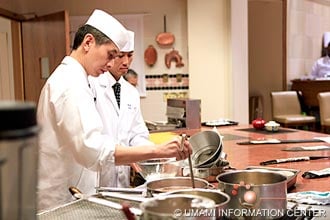
The focus of the final presenter Ali Bouzari, co-founder of Pilot R+D in Northern California was about how to make umami stronger. Fermentation is one of the culinary techniques that create high levels of umami. He let students taste shallot and garlic misozuke (pickled in miso: Japanese fermenting soybeans with koji mold). In this case, miso added umami to garlic and shallots. His surprise invention was a sauce he named "Nuka Beurre Blanc" made from nuka (rice bran). Nuka is fermented with salt and water, in which vegetables are pickled. Even though Japanese never eat "nuka" itself, Ali mixed it with cultured butter to make a super concentrated savory umami sauce, which wowed the entire audience. The fermentation of vegetables in the rice brand over time had increased the umami of "nuka" extraordinarily. It was a moment to realize that a new generation of umami experts is emerging in the US.
Student's response was positive. One commented "It's exciting to learn umami could be pursued not only in the traditional Japanese cuisine but also in many different recipes such as fusion cuisine." Another said she's willing to utilize MSG, umami enhancer, to explore new recipes.
"Compared to the first lecture 3 years ago," Dr. Ninomiya noted, "It's impressive that students are having such deeper understanding about umami and MSG."
